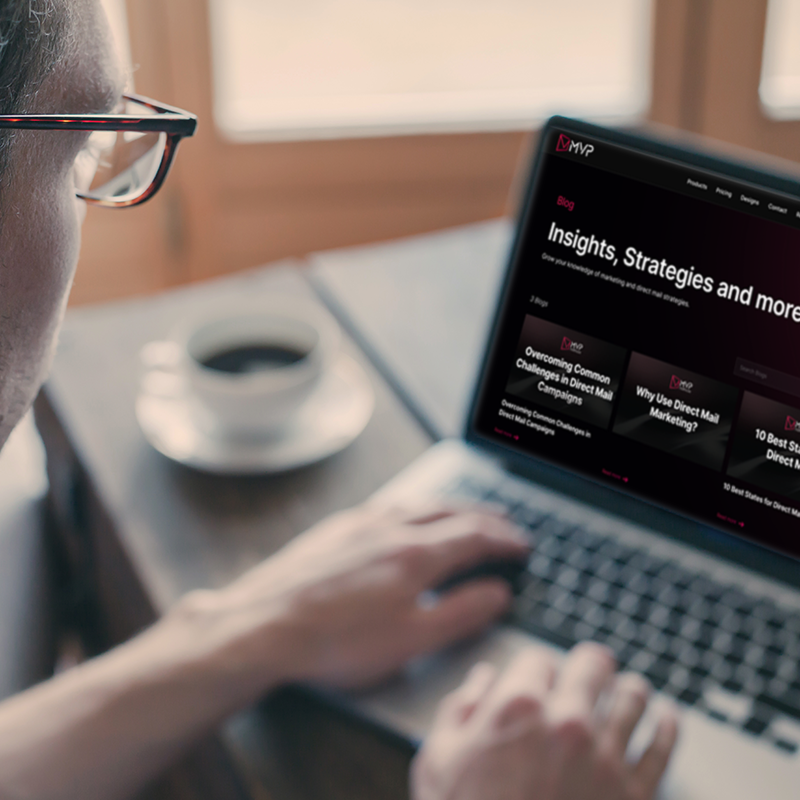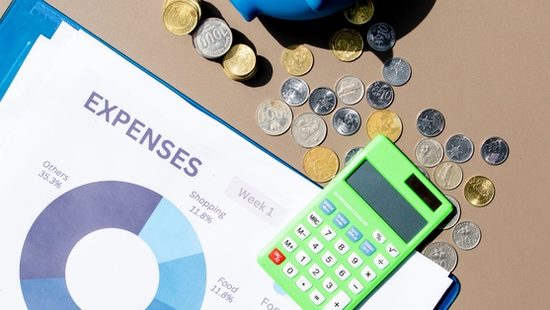How Call Scoring Works: A Simple Breakdown
How call scoring works to qualify high-intent callers, boost conversions, and reveal your best marketing results. Improve performance now—learn how call scoring works.

If you’ve ever wondered how call scoring works, you’re not alone. With more than 61% of businesses relying on inbound calls as their highest-value leads, understanding the quality of those calls has never been more important. Yet many companies still struggle to identify which calls are worth follow-up, which callers are ready to convert and which leads came directly from their marketing campaigns.
According to a recent report, 82% of marketers say insights from inbound calls and call experiences reveal costly blind spots in their organizations.
This article gives you a clear, practical, and deeply useful explanation of how call scoring works from the moment a call is captured to the moment it’s categorized as qualified, low-quality, or spam. Whether you use call tracking, direct mail campaigns, or run a busy front desk, understanding call scoring will help you improve conversions, measure your marketing ROI, and prioritize your best opportunities.
For additional background, you can also review our guide on what call scoring is and why it matters, but here we’ll go much deeper into exactly how it works behind the scenes.
What Call Scoring Is
Call scoring is the process of evaluating inbound phone calls to determine lead quality, caller intent, and the likelihood that a call will convert into revenue. While many businesses use call tracking extensively, call scoring adds a deeper layer of intelligence that goes beyond simply seeing where calls came from.
What Call Scoring Measures
At its core, a call scoring system evaluates several elements of a conversation, such as:
- The purpose of the call
- The language or keywords the caller uses
- The tone and sentiment of the conversation
- Whether the caller is sales-ready, exploring options, or not a fit
- Signs of conversion intent (appointment requests, pricing questions, etc.)
These signals create a more accurate way to qualify leads than relying on call duration or guesswork alone.
How Call Scoring Differs From Basic Call Tracking or Recording
Many businesses are familiar with call tracking especially those running direct mail, digital ads, or multi-location campaigns. Call tracking tells you where calls come from. For example, our guide on why call tracking helps grow your business explains how tracking helps measure marketing performance.
Call scoring, on the other hand, tells you how valuable those calls actually are.
To clarify:
- Call tracking → Shows you the source of the call
- Call recording → Provides a raw audio file of the call
- Call scoring → Evaluates the call and assigns a quality score
Businesses running direct mail often use call tracking and scoring together because it shows not only how direct mail generates calls, but also whether those calls represent real revenue opportunities. If you want to understand the mechanics behind tracking alone, see our article on how call tracking works in direct mail.
Call scoring adds the missing layer: Which callers matter most and why?
How Call Scoring Works (Core Breakdown)
Call scoring is more than a single action, it’s a series of steps that happen rapidly and often automatically. Below is a clear breakdown of each stage so you understand the full process from start to finish.
Call Capture
Everything starts with capturing the call. When someone dials a tracking number whether from a direct mail postcard, Google ad, or website, the call scoring system records:
- The call audio
- The date and time
- Caller ID and location (if available)
- The marketing source (based on tracking number)
This metadata is essential. Without it, you can't connect the dots between campaigns and call quality. Direct mail, for example, often generates high-intent calls because recipients typically call when they are ready to take action. Call scoring helps identify which direct mail responders are ready to convert.
If you want a deeper understanding of call tracking itself, our article What is Call Tracking? A Complete Guide for Dental Practices provides a detailed breakdown.
Transcription (Speech-to-Text)
Once a call is captured, the system converts the audio into text using speech-to-text technology. This step is crucial because it gives the software something it can analyze directly, text is easier for algorithms to interpret than voice recordings.
High-quality transcription accuracy ensures the call scoring system understands:
- What the caller asked
- How the staff member responded
- Whether the conversation showed intent, confusion, urgency, or hesitation
This is also the stage where industries like healthcare or dental practices benefit. For instance, terms such as “appointment,” “new patient,” or “insurance” reveal intent that transcription helps identify. This becomes useful later in dental appointment call scoring decisions, which we’ll cover more deeply in later sections.
Keyword & Phrase Detection
Once the call is transcribed, the scoring system scans the conversation for important keywords and phrases. These keywords help identify both positive intent and negative signals.
Examples include:
- “Do you take new patients?”
- “I’m calling about your offer.”
- “I want to schedule an appointment.”
- “How much does it cost?”
These phrases are strong conversion indicators.
On the other hand, calls like:
- “Wrong number.”
- “Not interested.”
- “Take me off your list.”
…indicate low quality or no potential.
Businesses running direct mail campaigns also benefit significantly here. When calls come from a postcard or brochure, scoring systems can detect intent phrases like “I received your mailer,” which ties into call scoring for direct mail leads.
Intent & Sentiment Analysis
After identifying keywords, the call scoring system evaluates how the caller speaks, not just what they say. This is where intent and sentiment analysis play a major role. The software reviews vocal patterns, tone, and context to determine whether a caller is:
- Actively shopping
- Comparing options
- Ready to buy or schedule
- Frustrated or confused
- Calling with a complaint
- Simply gathering information
For example, a caller who says, “I’m ready to move forward” or “I’m comparing a few offers right now” carries a different level of urgency than someone asking general questions.
In industries like home services, healthcare, and retail, sentiment often reveals urgency before the caller even states it directly. Even in dental marketing as explained in our guide on What Is Dental Marketing, tone and urgency often determine the likelihood of a new patient booking an appointment. Call scoring systems use this tonal data as another layer to predict conversion probability.
Lead Qualification Rules
Once intent and sentiment are understood, the call scoring system applies qualification rules. These rules assign points based on the presence or absence of conversion indicators such as:
- Asking for pricing
- Requesting an appointment
- Asking about availability or turnaround time
- Responding to an ad or mailer
- Sharing personal information (email, address, insurance, etc.)
- Comparing competitors
Each criterion carries a weight. For example:
- High-value signals (e.g., scheduling, asking about services) may add +20 to +40 points.
- Moderate-intent signals (e.g., questions about process or location) may add +10 to +15 points.
- Low-value or negative signals (e.g., spam, wrong number) may reduce the score.
This point-based structure gives businesses a consistent, unbiased method for evaluating call quality far more reliable than relying on call duration alone.
Many businesses running direct mail campaigns find that qualification rules help them understand not only how direct mail generates calls, but also which responses came from real prospects. To better understand the marketing fundamentals behind this, our article on What Is Direct Mail Marketing explains the broader strategy.
Final Score Assignment
After all the rules and criteria are processed, the call is assigned a final score. This score categorizes the call into segments such as:
- High Intent Lead
- Qualified Opportunity
- Warm Lead
- Low Intent
- Unqualified / Spam
- Missed Opportunity
- Wrong Number
These categories help businesses prioritize follow-ups, coach front desk or sales staff, and evaluate which marketing channels deliver the highest-intent calls.
Modern platforms such as CallPro by MVP Mailhouse take this further by offering real-time scoring, call recordings, staff performance insights, and pattern analysis. This combination allows businesses, especially dental practices, service providers, and multi-location companies to instantly identify missed opportunities and improve conversion rates.
Key Factors That Influence Call Scores
Understanding how call scoring works means knowing the exact factors that influence the final score. While different industries may adjust criteria, most scoring systems rely on a similar group of signals.
Intent Keywords
Words like “schedule,” “appointment,” “pricing,” or “quote” show strong buying intent. The presence of these keywords usually increases the score significantly.
Question Types
A caller asking, “How much does it cost?” or “Do you offer this service?” usually signals higher intent than someone asking general or vague questions.
Sentiment & Tone
Positive tone, clear interest, or direct questions show intent. Hesitation, confusion, or frustration often lowers the predicted likelihood of conversion.
Call Duration
While not a perfect indicator, extremely short calls often signaled missed opportunities, spam, or wrong numbers. Longer conversations with engagement tend to score higher.
Conversion Signals
These signals include:
- Giving personal details
- Asking for availability
- Requesting appointments
- Agreeing to next steps
For example, in dental appointment call scoring, a caller who provides insurance information or asks for an opening on the schedule reflects clear intent.
Spam or Wrong Number Identification
Systems detect spam based on repeated phrases, disconnected calls, or automated voices. Wrong numbers are quickly recognized through keyword triggers like “I dialed the wrong number.”
These factors together give businesses a clear, analytical view of every call whether generated from digital ads, organic SEO, referrals, or direct mail.
Types of Call Scoring Systems
Not all call scoring systems operate the same way. In fact, most businesses choose between three main models depending on their goals and resources.
Rule-Based Scoring (Manual Criteria)
This approach uses predefined rules set by the business. For example:
- +20 points for appointment request
- +10 points for pricing question
- -30 points for spam indicators
It's highly controlled and predictable but can miss subtle context or emotional cues.
AI-Powered Scoring (Machine Learning Models)
AI scoring adapts to patterns, learns from past calls, and becomes more accurate over time. It identifies:
- Tone variations
- Keyword combinations
- Behavioral patterns
- Sentence structure
- Real-time intent
This model excels in high-volume businesses because it processes thousands of calls with consistent accuracy.
Hybrid Systems (AI + Human Review)
This is the most accurate model. AI performs the heavy lifting, and humans review calls where nuance matters. It’s especially useful in regulated industries or businesses where each lead carries high value.
To help businesses understand how call tracking fits into the larger picture, we also outline its core benefits in Key Benefits of Call Tracking in Your Business, a useful companion to this section.
Benefits of Using Call Scoring
Call scoring isn’t just a technical process, it’s a strategic advantage. When implemented correctly, it transforms raw inbound calls into actionable insights that drive smarter decisions and stronger results across marketing, sales, and customer operations.
More Accurate Lead Qualification
Instead of guessing which callers are ready to buy or schedule, businesses get objective, data-backed assessments. The result is a more predictable pipeline and fewer missed revenue opportunities.
Better Marketing Attribution
When paired with call tracking, call scoring helps measure which marketing channels generate high-intent calls, not just high call volume. This is especially valuable for businesses using direct mail, as shown in our guide on Why Use Call Tracking to Grow Your Business. With scoring layered on top, teams know exactly which campaigns drive the best quality leads.
Faster, More Informed Follow-Up
Sales teams and front desk staff can instantly prioritize callbacks and follow-ups based on intent level. High-scoring calls get addressed first, ensuring the warmest opportunities never slip through the cracks.
Improved Call Quality Insights
Scored calls reveal patterns such as frequently asked questions, common objections, or front desk issues. This insight helps businesses coach staff, refine scripts, and optimize customer experience.
Accuracy & Limitations
Even with advanced technology, no call scoring system is perfect. Understanding where accuracy thrives and where limitations appear helps businesses set the right expectations.
How Accurate AI Scoring Is
Modern AI-based systems routinely achieve high accuracy because they analyze tone, intent, language patterns, and even silence. The more calls the system processes, the smarter it becomes, learning how real customers speak, ask questions, or express interest.
Common Scoring Challenges
There are still obstacles, such as:
- Background noise or poor audio quality
- Strong accents or rapid speech
- Unclear caller intent
- Calls with minimal conversation
- Industry-specific terms the system hasn’t learned yet
Despite these factors, call scoring continues to outperform manual review in speed and consistency.
How Accuracy Improves Over Time
AI models evolve. Every transcribed call, every corrected score, and every new conversation helps fine-tune the system. Over months of usage, businesses typically see a significant increase in scoring precision, especially when integrating human review or hybrid scoring.
To understand how these insights support marketing performance overall, you may also find value in our article What Is Call Tracking? A Complete Guide for Dental Practices, which explains the foundation call scoring is built on.
Conclusion
Call scoring is more than a behind-the-scenes process, it’s a powerful tool that helps businesses understand caller intent, improve team performance, and uncover which marketing channels truly drive high-value leads. By breaking down how call scoring works from call capture and transcription to keyword detection, sentiment analysis, and final scoring, you gain a clear view of how every call is evaluated and why it matters.
In an environment where inbound calls often represent the most motivated and valuable prospects, call scoring gives you the clarity needed to follow up faster, optimize campaigns, and deliver better customer experiences. Whether your leads come from direct mail, digital ads, SEO, or referrals, call scoring ensures no opportunity is overlooked.
If you want to take your performance to the next level, explore more insights in our article on What Is Direct Mail Marketing or visit our website to see how modern call intelligence can transform your business.
To experience call scoring in action, schedule a demo or explore our solutions today at MVP Mailhouse.
Tags
Frequently Asked Questions
Related blog



